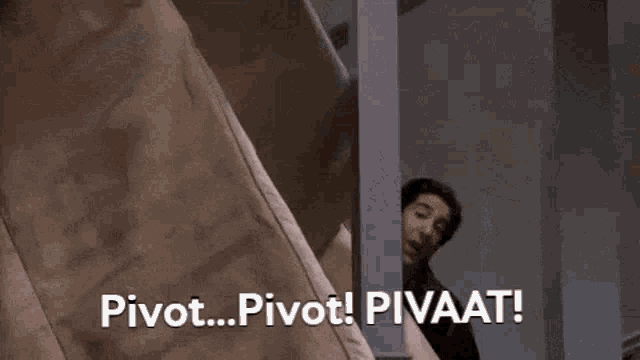The art of knowing what doesn't work

People often ask me for strategies on how to develop creative ideas. Is there a magic way to come up with the next award winning-campaign?
I wish.
For me, I find the best way to achieve impactful creative ideas is to know what doesn’t work. Sounds counterintuitive, doesn't it? We’ve all heard the sacred rule of brainstorming—no idea is a bad idea. But let’s be honest, there are bad ideas. That’s not to say they aren’t valuable, though. You should still explore these ideas! The art of knowing what doesn’t work is to get everything down on paper: the good, the bad, the ugly. Then you begin the process of eliminating what doesn’t work. Fail fast. Refer back to the research and trust your intuition.
The key to this part of the process is trial and error. There’s no magic here, the process is rudimentary—you need to be ruthless and eliminate ideas that don’t work. Maybe they aren’t on brief, maybe they’ve been done before, maybe they just don’t make sense (which actually sometimes can be a good thing—more on that later). The real magic is identifying what ideas, or what parts of an idea work.
Typically you’ll start to see a pattern, maybe something from one idea works, and something from another. This is where you should spend your effort. Once you get the thread of a good idea, you begin to shape it. Like a sculpture you spend time to hone the idea to completion. But don’t lose sight of failing fast. Sometimes through the process of honing an idea, the initial spark is lost. Don’t be afraid to pivot.

So you may be asking, how do you know what idea will work? It would be nice to say it’s just a gut feeling, some power you’re born with that you don’t have to work at. But that’s not how it goes. The art of knowing what doesn’t work is developed over years of experience and mastered through the way we operate.
It’s all about:
- Knowing the brand. We have a rigorous stakeholder process to uncover the core truths about a brand.
- Knowing the research. Stakeholder sessions are one thing, but existing and desk research are powerful tools.
- Knowing the data. (More on this later).
- Finally, and most importantly, knowing the craft. We’ve learnt through years and years of developing creative what works and what doesn’t work. It’s no different from a woodworker that knows how to whittle through years of experience. We are immersed in the industry everyday, working on different types of projects for different clients.
Beyond all this, sometimes the very best ideas, the ideas that stand out, are the ones that are actually unfamiliar. These ‘around the edges’ ideas are typically rejected at first, because they aren’t immediately recognized. But in a world of short attention spans, ideas that go against the grain and get your mind to stop and think are often the ones that will have the most impact.
“AI is an amplifier of understanding”
What good is a blog article in 2025 without mentioning AI? Even though the creative process has remained the same over time, AI is supercharging it. The ability to develop ideas has never been quicker. But are they good ideas? That’s where the skill of knowing what doesn’t work comes into play. You need to know what’s good (and what’s not) in order to use AI effectively.
I read a quote recently that really resonated with me: “AI is an amplifier of understanding.” This could not be more true. You can use AI to your advantage, but you need to know what you're looking for. We’ve all read terrible AI copy and seen AI slop imagery—these are the ideas from the people who don’t know what doesn’t work.
AI can be used in the creative process, but it can’t replace the creative process.
For copy, AI can be used as a very advanced thesaurus. You may not use exactly what it produces, but you may get inspired from a word or phrase. This is no different from developing a creative idea—you get all the ideas down and start eliminating. AI can just do it much quicker than before.
Similarly, AI image creation can be a powerful tool. But you need to understand what you’re trying to create. Fundamentals like framing, the rule of thirds, negative space, leading lines, etc are crucial to great photography. We recently required a very specific arctic image for a client. It wasn’t something we could organize a shoot for, and stock photography wasn’t going to cut it. It took countless prompts, really honing the image to be exactly what we wanted. We ended up with a generated image that was exactly what we needed. In a lot of ways, it’s no different from sifting through a stock photo library. You need to have an idea of what you are looking for, and what makes a striking image.

The image we created for a client through detailed AI prompting.
Where AI is also powerful is when you start with a problem. Do you need to make a 60 second script shorter to a 30? Have AI help you. It may not be perfect, but it can speed up the process dramatically. As always though, you’ll need to understand if the output is good. Is it still on brand? Is the initial idea still resonating?
Test and learn
Never before have we had so much data in the world of creativity. Digital reports, Google Analytics, the list goes on. Sometimes the quickest way to finding something that works is to fail. In a digital world we can A/B test, pivot quickly and truly know what is resonating with our audiences. Use this to your advantage, the more you know what doesn’t work, the better your future work will be.
You need to know the rules to break them
So, it really comes down to knowing the fundamentals of creativity. Study your craft, hone your skills. But, I’ll finish this article with one thing that is really important—you need to know the rules in order to break them. Sometimes the best creative ideas are the ones you were not expecting. In a world where AI is creating things at lightning speed, human, imperfect ideas are going to shine through.
We know what doesn’t work
At Alphabet® we approach branding and creativity with a thorough process to ensure brands are resonating with audiences. We have decades of experience in knowing what doesn’t work, so you don’t need to.



